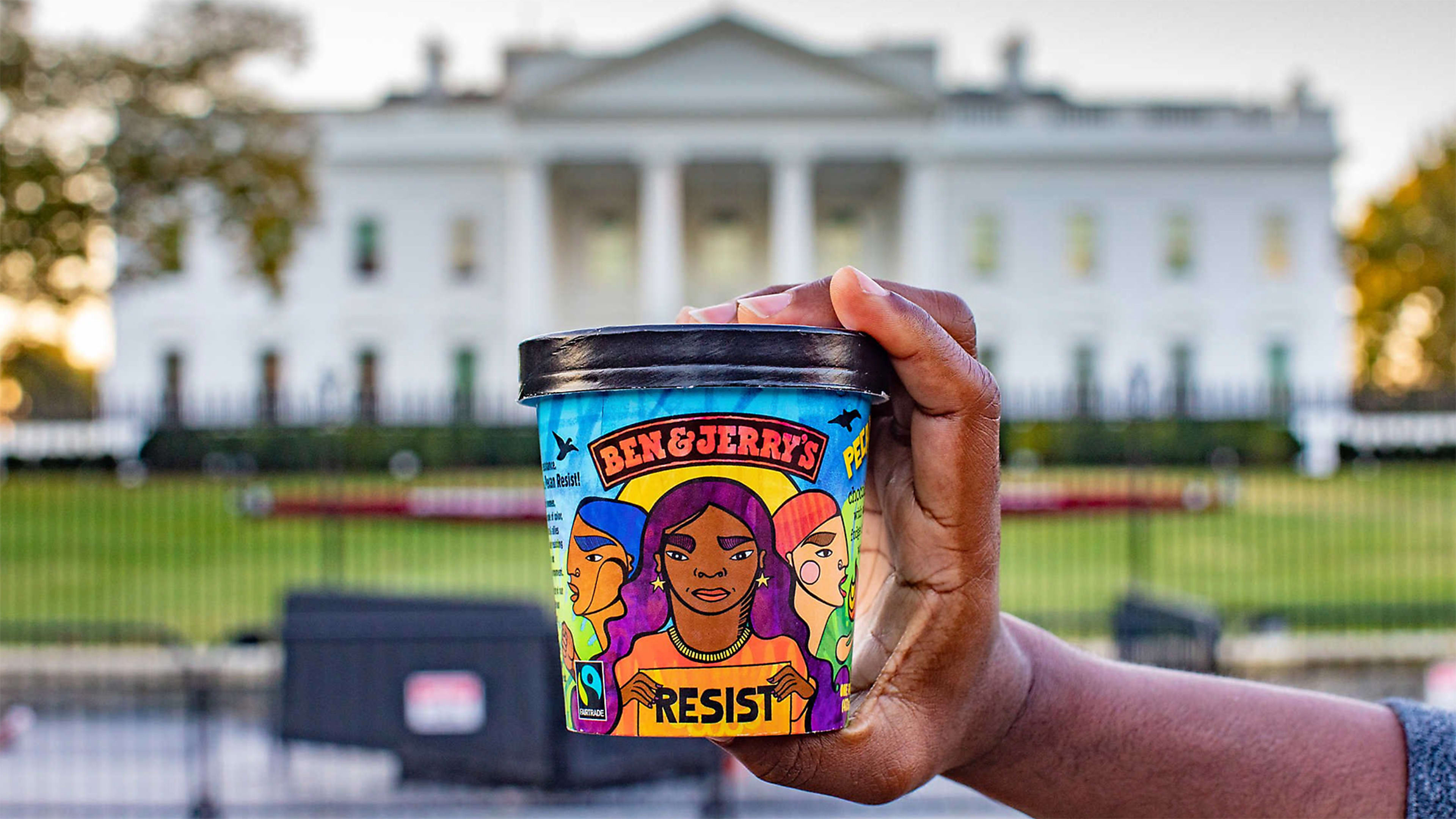Ben & Jerry’s is well-known for its deliberate messaging on social media and in the press. The company takes a powerful no-nonsense approach in its statements, speaking out about everything from the death of George Floyd, to climate change, to reparations for Black Americans.
In an interview for the Fast Company series “The Work in Progress,” Christopher Miller, the company’s head of global activism strategy, and David Rappaport, Ben & Jerry’s global social mission officer, share their messaging strategy, and how they ensure it differs from the milquetoast tone taken by so many other corporations.
WATCH: Ben & Jerry’s has successfully blended ice cream and activism for decades—here’s how
When the Vermont-based ice cream company was crafting its response to the January 6 Capitol attacks, speed and accuracy were key—but so was listening to outside voices, says Miller. He says that having the best response entails thinking critically about the intended message, taking timing into account, and focusing on the workshop process among a small group. “[An] external base touch is always super important. We will often gut-check something with our outside partners and allies.”
Finding the right language is a priority. “Words matter,” says Miller, who is a veteran of Greenpeace. “We take our lead from the people who are on the front lines of these issues [who] have been historically marginalized, [who] live and breathe these issues. People have to understand our history and how it created the future that we’re living today.”
In response to recent attacks on Asian Americans, including the murder of six Asian American women in Atlanta, Miller says the company has been discussing the dangers of the racist rhetoric on shaping real-life violence. “Charlottesville. Atlanta. Time after time, it’s clear that these kinds of words have real-world impacts. If I’m honest, there weren’t enough mainstream voices willing to stand up and say, that’s not okay.”
Rappaport says that companies need to be unafraid to draw a line in the sand and show current (and future) employees what they can look for. Amid a turbulent political and cultural climate, Rappaport says it’s no wonder there’s a growing “hunger … to ensure there’s justice in society and the workplace.”
He says helming a company requires a skill of listening and expressing a receptiveness to new ideas. “Listen to your employees. Go into [conversations] really understanding that real change needs to be made; there’s not a ‘neutral’ on a moving train. You’re either racist, or you’re anti-racist. You got to have [these conversations] and get comfortable with that discomfort.”
Recognize your brand’s excellence by applying to this year’s Brands That Matter Awards before the early-rate deadline, May 3.
